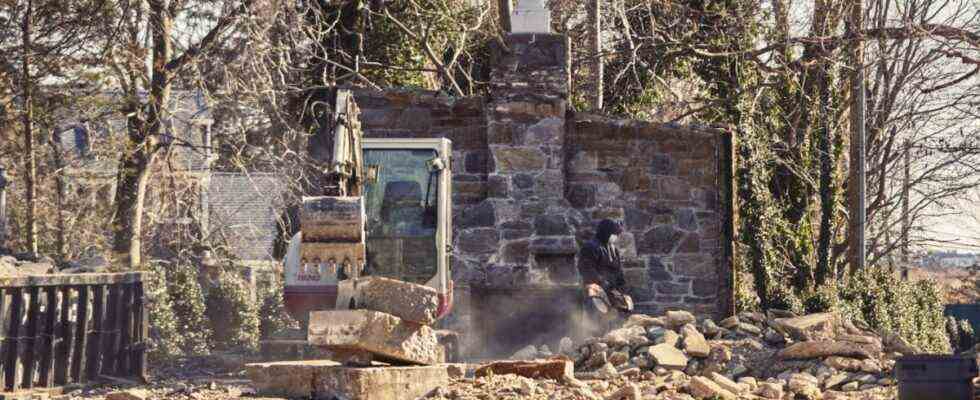Marcel Breuer’s house “Geller I” in Lawrence on Long Island is no longer there. It fell victim to the demolition excavators on January 26 because real estate entrepreneur couple Judy and Shimon Eckstein, who recently purchased the architecturally significant house, would rather construct a new building and a tennis court on the property. Unfortunately, there was no effective monument protection that could have prevented them from doing so.
This destroyed a building that was considered just as central to the development of modern building in the USA as it was to Marcel Breuer’s subsequent career after immigrating from Germany. Breuer designed the spacious home for Phyllis and Bertram Geller in 1945 in a suburb of New York City, not far from today’s John F. Kennedy Airport. The building is considered the beginning of his emancipation from the shadow of his Bauhaus colleague Walter Gropius.
One can also read an Americanization of Breuer in the design, which is more oriented towards the surface than the height, and one can certainly see this flat residential building of the Gellers as the epitome of what is called “Midcentury Modern” today, with all the insignia that this term specifically implied in the East Coast cultural milieu. A son of the Gellers remembers in the New York Timeshow he sat as a small child in the large living room, in front of the large fireplace, looking through the large picture window at the green – and obliviously nuzzling the thick layers of paint on the large painting by Jackson Pollock, which was created just as specially for this house as Breuer’s Furnishings down to the individual pieces of furniture.
Instead of renovating, many modernist buildings are carelessly destroyed
Breuer’s breakthrough came with the building in America: in 1947, the magazine “Progressive Architecture” named it House of the Year, and Philip Johnson, then responsible for architecture at the Museum of Modern Art, invited Breuer to exhibit in the courtyard of the museum. The “House in the Museum Garden” from 1949 went down in architectural history itself and would be unthinkable without the “Geller I” house. Breuer later built another house for the same clients in the same place, “Geller II”, whose current owners have so far asserted that they have no plans to demolish it. But fans of architecture and conservationists in the USA are still alarmed. Too often in recent times, examples of a modern age that is getting on in years and is therefore associated with certain maintenance costs have been preferred to get rid of relatively easily.
In recent years, for example, it has affected Paul Rudolph’s brutalist building in Connecticut, Bruce Goff’s spiral-shaped Bavinger House in Oklahoma City. It is often lamented that the American public lacks a sense that historically valuable buildings can also be decidedly modern – and that modern architecture is historically valuable.
In Germany, where modernist architecture is officially considered much more part of the cultural heritage, the situation is in reality hardly any better: in Berlin, the house that Marlene Moeschke-Poelzig once designed for herself and her husband Hans Poelzig in Berlin has just been demolished to make way for a more profitable new building. And not even the much more conservative modernism of the Stuttgart school is immune to something like this: at the end of the year The demolition of Paul Schmitthenner’s villa for the industrialist Otto Werner began there.

